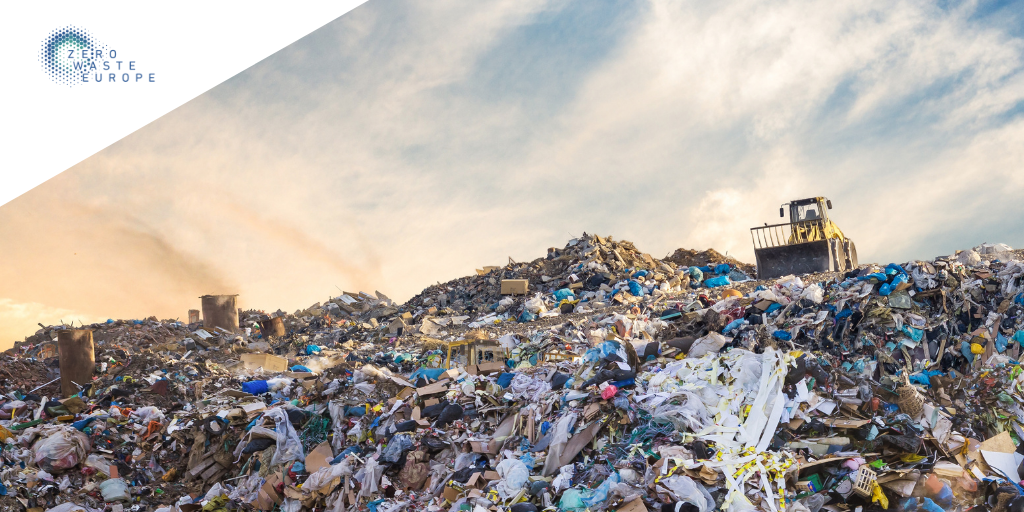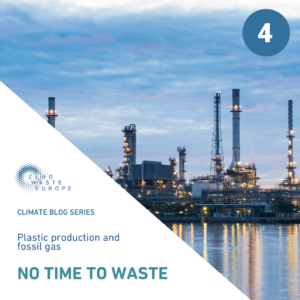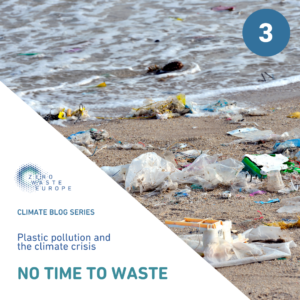No Time To Waste: Waste Management & Methane

Humans are creating more waste than ever before – our overconsumption patterns are placing an inconceivable burden on our planet and although waste often feels out of sight, out of mind, it doesn’t just disappear. As mentioned in the first entry in this blog series, most of our waste in Europe ends up in landfills or incinerators. In fact, 46.6% of waste was landfilled in the EU28 in 2016, left in huge piles to remind us of our addiction to buying things.
Landfill sites pose an obvious environmental threat in that they require vast kilometres of land to exist; causing damage to ecosystems, they are a visible eye-sore on our natural environment, and they create problems with toxic contamination of soil. Yet it’s their climate impacts that often go un-discussed.
Landfill Pollution
One of the constant challenges with landfill sites is how to dispose of toxic waste. Particularly where chemicals like benzene and formaldehyde are involved – if they leak into the environment they create dangerous toxic wastelands. If poorly managed, landfill sites can leak chemicals into water supplies, contaminate soil, and have been shown to generate health impacts for those living within 5 miles of the site. Landfill sites have been reported to contribute to smog and localised air pollution – further exacerbating health problems such as asthma. And unfortunately, these sites are too often located in disadvantaged communities, further exacerbating poverty, health problems and creating unsafe spaces to live.
Methane Matters
Beyond chemical pollution from landfills, there is methane. A greenhouse gas known to be 86 times more potent than carbon dioxide over a twenty year cycle. Methane only lives in the atmosphere for a short time (around 12 years), unlike carbon dioxide which wreaks havoc on the environment in 100 to 300 year cycles. For this reason, 100 year cycles have been the common measurement for all greenhouse gases which explains why methane is often under reported and misrepresented as being less damaging than carbon dioxide. Yet, when looking at 20 year cycles methane is clearly just as much of a climate threat as CO2.
Landfill sites involve the decomposing of various forms of waste – mostly organic waste – which release methane. In 2010, global landfill sites were responsible for emitting around 800,000,000 tonnes of CO2 equivalent methane – around 11% of all methane generated by humans annually.
No Time To Waste
A zero waste approach to waste management identifies that our current linear economy is to blame for our throwaway waste habits. We need to manage resources in a way that preserves their value and energy, enabling a circular economy as well as keeping our planet within liveable atmospheric conditions.
To make this happen we need an ambitious waste prevention policy that prioritises reuse, refuse and rethink practices, followed by increased separate collection of waste at source, and quality recycling. We need to reduce food waste in the first place, and invest in composting as a means of managing organic waste without releasing methane but by enriching soil instead, we need to tackle e-waste through innovative reuse solutions and business models built to last, and we need to rethink our overconsumption culture to ensure that our planet has a fighting chance.
In the interim, we need pre-treatment of organic waste before landfilling. This will reduce the mass of organic waste in landfills, therefore reducing the methane released. To ensure this is carried out, separate collection of biowaste must be prioritised to reduce the amount of waste going to disposal in the first place. Cities like Milan have already evidenced the positive impacts of this work.
By reducing the amount of waste sent to landfills and incinerators, zero waste strategies are faster to implement, cheaper to operate and safer for the environment than traditional waste management. If we want to stop runaway climate change, we need to tackle our waste addiction at source. Find out more about our relationship with single-use throwaway products and climate change in our next blog.
Read more about our work on Waste here.
Dig into the topic with our policy briefing on The case for an integrated Waste Prevention Framework.


